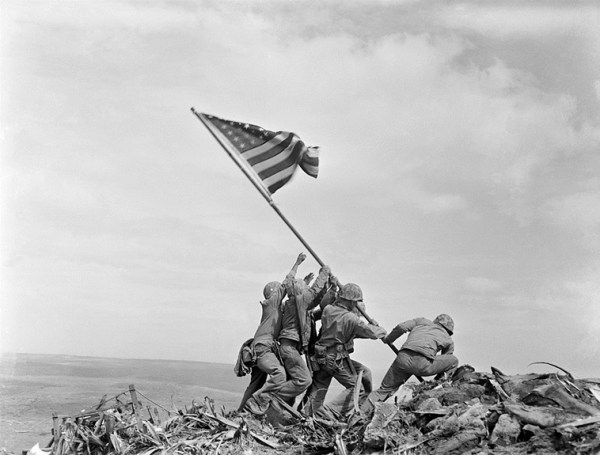Three days after the bombing of Hiroshima on August 6, 1945 — even before its devastating impact could be gauged fully — the United States dropped a second atomic bomb on Japan, this time over the city of Nagasaki.
The bomb, which exploded at 11.02 am local time on August 9, was delivered by an American B-29 Superfortress, which took off from the west Pacific island of Tinian. Christened “Fat Man”, the nearly 4,700 kg bomb was a plutonium implosion-type nuclear weapon, much like the one used in the Trinity Test. It had a yield of approximately 21 kilotonnes.

The bombing of Nagasaki is often overshadowed in modern recollection by that of Hiroshima, which was the first use of such a weapon in war, and the first public acknowledgement of the existence of nuclear weapons.
Also, despite “Fat Man” being around 40% more powerful than “Little Boy”, the bomb dropped over Hiroshima, in terms of yield, it caused far fewer casualties — an estimated 64,000 in Nagasaki vs an estimated 135,000 in Hiroshima.
This has led to some historians asking: just why was a second atomic bomb dropped at all?
Given the casualties in Hiroshima and the sheer devastation that was caused, surely “Little Man” delivered any message, strategic or symbolic, that the US wanted to send to Japan.
Then what did a second bomb achieve?
The American justification: Saving American (and Japanese) lives
Many historians today believe that Japan’s war effort was doomed from the very beginning — it simply did not possess the resources to keep up with the industrial might of the United States and the Allies. This was the reason behind its imperial conquest of Asia as well as its decision to bomb Pearl Harbour on December 7, 1941, a move which it (wrongly) hoped would put the United States’ Pacific Fleet out of operation.
But even as the tide turned against it, the Japanese put up fierce, often fanatical, resistance. Admiral Chester W Nimitz’s island-hopping strategy — in which US marines would one by one take over islands of strategic importance in the Pacific eventually leading up to Japan’s home islands — was working, but at a high cost.
 “Raising the Flag on Iwo Jima”, by Joe Rosenthal. One of the most iconic photos of the 20th century, this flag shows American marines holding up the US flag after capturing Mount Suribachi on the island of Iwo Jima. The Battle of Iwo Jima lasted 5 weeks and resulted in over 40,000 casualties. (Wikimedia Commons)
“Raising the Flag on Iwo Jima”, by Joe Rosenthal. One of the most iconic photos of the 20th century, this flag shows American marines holding up the US flag after capturing Mount Suribachi on the island of Iwo Jima. The Battle of Iwo Jima lasted 5 weeks and resulted in over 40,000 casualties. (Wikimedia Commons)
Leading up to the bombing, the US had already suffered more than 3.5 lakh casualties, with over 1 lakh dead. By July 1945, as Secretary of War Henry Stimson would later put it, there was no sign of “any weakening in the Japanese determination to fight rather than accept unconditional surrender”.
“We estimated that if we should be forced to carry this plan [to invade Japan] to its conclusion, the major fighting would not end until the latter part of 1946, at the earliest,” Stimson wrote.
“I was informed that such operations might be expected to cost over a million casualties, to American forces alone.”
This is where the atomic bombs came in. According to the US military brass, dropping the bombs would be a far quicker, and less deadly way to end the War.
The revisionist position: Curtailing Soviet influence
However, many historians dispute this justification. They argue that Japan knew it was defeated well before Hiroshima. In fact, the Japanese had even reached out to the Soviets — who were yet to declare war on Japan — to help mediate peace talks, throughout 1945.
Moreover, the estimates of possible casualties during an invasion, which informed the decision to use nuclear weapons, were wildly exaggerated. They did not consider Japan’s dire economic and military situation after years of war, and overstated the Japanese people’s fanatical loyalty to their country and Emperor.
For the revisionist historians, the bombings were aimed purely at stymieing any Soviet designs in the Far East. While the Soviets were instrumental in the Allied victory over Germany, their collaboration with the western allies (primarily the US and Great Britain) had always been uneasy.
Also Read | Hiroshima Day: How the mushroom cloud boomed and bloomed across pop culture
This led to the “race to Berlin” — where the American and British forces in the western front raced against the Red Army in the east to capture the German capital, and to control as much land as possible — and eventually the drawing of the Iron Curtain across Europe.
The US feared something similar might happen in the Pacific theatre. President Harry S Truman was desperate to limit Soviet gains, in line with his post-War policy of containment. This is why nuclear weapons were used — to show the Soviets the extent of the US military might.
It is in this light that the bombing of Nagasaki becomes particularly important.
How the Soviet invasion of Manchuria alarmed the US
Nagasaki did not follow Hiroshima as much as it followed the Soviet invasion of Manchuria, which began on August 8. Manchuria, a region in northwestern China, had been under Japanese occupation since 1932. Rich in natural resources, it was seen by the Japanese public as a “lifeline” to their country’s economy.
While American commentators have often argued that it was the atomic bombs that brought the War to an end, others have focussed more on the Soviet invasion itself.
“The Hiroshima bomb did not change Japanese policy to seek mediation [with the help of the Soviets],” Japanese-American historian Tsuyoshi Hasegawa told Newsweek. “The Soviet Union was the last hope for the Japanese government to terminate the war … That hope was totally dashed [when they invaded].,” he added.
Also Read | This Quote Means: ‘Atomic bomb deadened the finest feeling that sustained mankind,’ said Gandhi
This was what pushed Emperor Hirohito to surrender unconditionally, a decision which was taken on August 10, much before the full extent of the damage caused in Nagasaki was reported.
Crucially, for the US, the Soviet invasion was troubling as well. Gar Alperovitz, author of ‘The Decision to Use the Atomic Bomb’ (1995) suggests that the US deployed the plutonium bomb on Nagasaki to convey unambiguously to the Soviets the strength of its nuclear arsenal.
It was not enough to show that the US had the ability to build an atomic bomb — it had to show that it had the ability to build an arsenal of nuclear weapons which it could use as it wished.
The aftermath of the Nagasaki bombing
Emperor Hirohito announced Japan’s surrender on August 15, a week after the Soviet invasion of Manchuria and the bombing of Nagasaki. What exactly caused the surrender is still heavily debated by scholars. So is the actual US intent behind the bombing.
Most Read 1Happy Dussehra 2023: Wishes, Images, Quotes, Status, Messages, Photos, and Greetings 2‘SIM Swap fraud’: Delhi advocate receives 3 missed calls from unknown number, loses money from account 3Bishan Singh Bedi passes away: ‘Lost a younger brother, lost a part of my heart’, mourns Pakistan’s Intikhab Alam 4Centre approves voluntary retirement of powerful Odisha IAS officer V K Pandian 5Vishal Bhardwaj recalls Satya days; says RGV used to prostrate before Anurag Kashyap: ‘Anurag had no filters, would say anything’Also Read | Explained: Why Russia and Japan never officially declared peace after WWII
“The bomb was so top secret that there were no formal meetings about it, there was no official discussion about what to do, there wasn’t the kind of decision-making process that we have with most kinds of policy,” Campbell Craig, co-author of ‘The Atomic Bomb and the Origins of the Cold War’ (2008) told The History Channel.
“So a lot of our opinions about what really drove the United States to drop the bomb is guesswork.,” he said.
Also ReadWho are the Palestinians?The colonial — and anti-colonial — roots of Durga PujaFive things you did not know about Bhagat Singh: When Jinnah defended him…39 years since Operation Bluestar: What led up to it, what happened
However, what cannot be denied is that the decision to bomb Japan, especially to bomb Nagasaki, was rife with moral ambiguity, something that cannot — and should not — be disregarded while analysing their use.
© The Indian Express Pvt Ltd



